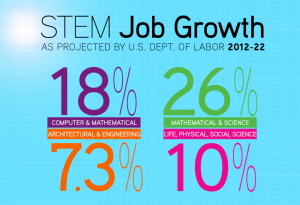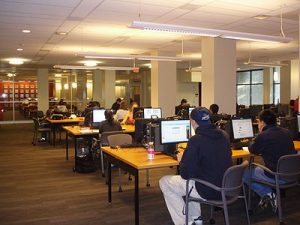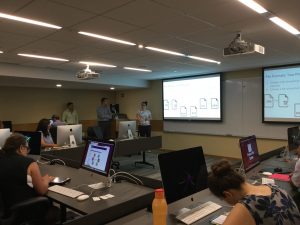Forty-nine % of all STEM students switch majors or drop out before graduating. Here’s the good news: librarians are positioned to save the day with new technology and a new role on campus.

Science librarians play a critical role in the modern economy by providing institutional support to much-needed STEM students, who are especially vulnerable in their first year of study. According to a 2014 report from the Bureau of Labor Statistics, more than 9 million STEM-focused careers will be created in the United States between 2012 and 2022. Unfortunately, the number of students graduating with STEM degrees isn’t keeping pace.
Despite a steadily growing enrollment in STEM majors through recent years, a 2013 study by the U.S. Department of Education and the National Center for Education Statistics found that 49% of all Bachelor’s degree STEM candidates change major or drop out entirely before graduating.
Two main reasons for this high attrition rate can be directly tied to areas affected by librarians:
- A student’s lack of success in their first year, and
- An overall lack of institutional support for STEM students.
Because librarians curate, deliver, promote, and teach students and faculty about the most innovative resources available today, they have a huge role in keeping STEM students engaged and successful through graduation.
JoVE is focused on making science easier and more reproducible, and making science students more confident and productive. Here’s an example of how the librarians at the University of California, Irvine are supporting STEM students and faculty with videos from JoVE:
EdTech and the Library
To increase science student success and placement into modern STEM careers, modern resources and teaching techniques are required. In response to the high attrition rate of STEM students, librarians need to lead their institutions toward technologies that can make an impact on student learning through innovation and accessibility.

A wave of EdTech services and resources have developed in recent years, all designed to improve student learning outcomes through an increase in efficiency, efficacy, collaboration, and more. There are several different approaches to flattening the learning curve in science: free online education platforms like Coursera, blended learning – a pedagogy that splits instructional time between the classroom and home – systems like Blinklearning, and detailed video education libraries like JoVE, to name a few.
As the curator of STEM resources, academic librarians are poised to lead the growth of EdTech by researching, evaluating, and investing in tools that support the diverse educational needs of modern STEM students.
Simply bringing EdTech resources to an institution won’t be enough to improve student retention and success. Librarians need to be vocal advocates for their use, and show eager teachers how to get the most benefit in their classrooms.
Blending Librarian and Faculty Skills
Folding teaching skills into the academic librarian role has begun to spread rapidly through the profession.

Since 2004 a steadily growing community of librarians has been embracing the idea of making teaching and technology central parts of their position by becoming “Blended Librarians.”
As defined by the creators of this movement, Steven J. Bell and John Shank, a blended librarian “combines the traditional skill set of librarianship with the information technologist’s hardware/software skills, and the instructional or educational designer’s ability to apply technology appropriately in the teaching-learning process.”
With this new role, librarians can become much more active in increasing student success and retention, decrease STEM student attrition and directly benefit the scientific community as a whole.
Stay Up-to-Date with Librarian Trends & Techniques


